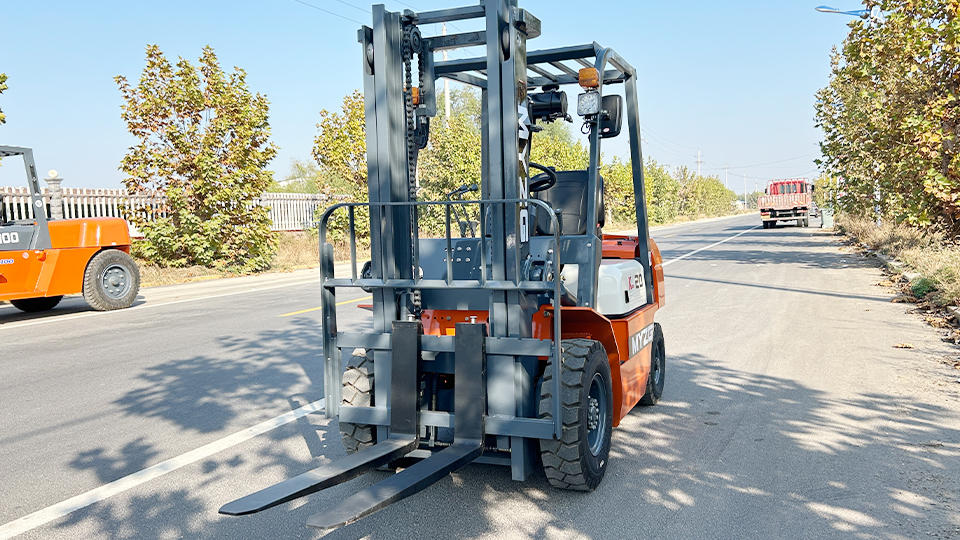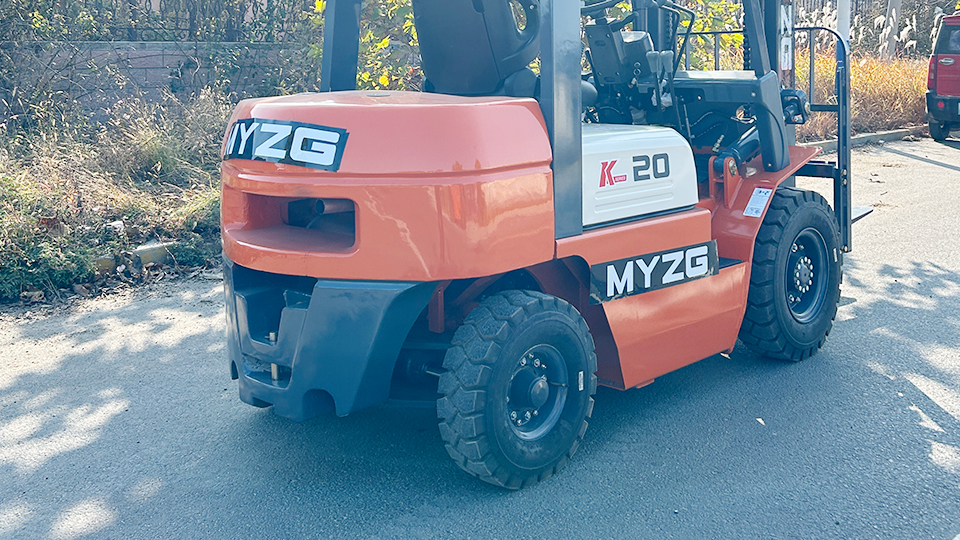
Imagine trying to balance a ruler on your finger. If the weight is evenly distributed on either side of your finger, it's relatively easy. However, if you place a heavy object far to one side, the ruler becomes much harder to control and is more likely to tip. The forklift and its load operate under the same fundamental principles of leverage and stability. The load center dictates the leverage the load exerts on the forklift.

Why is the Load Center So Important? The Stability Triangle
The significance of the load center becomes clear when considering the stability triangle of a forklift. This theoretical triangle is formed by the three points of contact between the forklift and the ground – typically the two front wheels and the center of the rear axle (or the two rear wheels in some three-wheeled models). The forklift remains stable as long as the combined center of gravity of the forklift and the load falls within this stability triangle.
The load center directly influences the location of this combined center of gravity. A load with a larger load center (meaning its center of gravity is further away from the forks) shifts the combined center of gravity forward. If this shift moves the combined center of gravity outside the stability triangle, particularly beyond the front axle, the forklift can become unstable and potentially tip forward.
Determining the Load Center: Understanding the Load Capacity Plate
The load center is not an inherent property of the forklift itself but rather a characteristic of the load being lifted. However, forklifts are designed and rated to handle loads with specific maximum load centers. This information is clearly indicated on the load capacity plate (also known as a data plate or rating plate) found on every forklift.
The load capacity plate provides crucial information about the forklift's capabilities, including its maximum lifting capacity at a specified load center and lift height. Typically, the load capacity is inversely proportional to the load center. This means that as the load center increases (the load's weight is further forward), the forklift's maximum lifting capacity decreases.
The load capacity plate will usually specify one or more rated capacities along with their corresponding load centers. For example, a forklift might be rated to lift 5,000 lbs at a 24-inch load center and only 4,000 lbs at a 30-inch load center. This clearly illustrates the impact of the load's center of gravity on the forklift's ability to safely lift and move it.
Key information found on the load capacity plate related to load center includes:
Rated Capacity: The maximum weight the forklift can safely lift.
Load Center: The horizontal distance from the front face of the forks used to determine the rated capacity. This is often expressed in inches or millimeters.
Maximum Fork Height: The maximum height to which the rated capacity applies. Capacity may also decrease with increased lift height due to changes in stability.
Attachment Information: If the forklift is equipped with attachments (e.g., side shifters, clamps), the load capacity and load center ratings may be different and will be specified for the attachment.
It is absolutely critical for forklift operators to always refer to the load capacity plate before attempting to lift any load and to ensure that the load's center of gravity does not exceed the specified load center for the desired lifting capacity.
Factors Influencing the Load Center
Several factors contribute to the load center of a specific load:
Load Dimensions: The length and width of the load significantly influence where its center of gravity lies. Longer or wider loads tend to have a center of gravity further from the forks if not properly balanced.
Load Weight Distribution: An uneven distribution of weight within the load will shift its center of gravity. A load that is heavier on one side or towards the front will have a different load center than a uniformly weighted load of the same dimensions.
Pallet or Skid Dimensions: The size and design of the pallet or skid on which the load is placed also affect the overall center of gravity of the unit load.
How the Load is Positioned on the Forks: Incorrectly positioning the load on the forks, such as not having it fully engaged against the backrest, can effectively increase the load center.
The Impact of Load Center on Forklift Operation
Understanding the load center is paramount for safe and efficient forklift operation. Here's how it impacts various aspects:
Stability: As previously discussed, exceeding the rated load center significantly reduces the forklift's forward stability, increasing the risk of tipping. This is particularly critical when lifting heavier loads or when operating on uneven surfaces or ramps.

Lifting Capacity: The load capacity plate clearly demonstrates the inverse relationship between load center and lifting capacity. Attempting to lift a load with a center of gravity beyond the rated load center can overload the forklift, potentially causing hydraulic system failure, structural damage, or a loss of control.
Maneuverability: A load with a larger load center can make the forklift feel less responsive and more cumbersome to maneuver. The increased forward weight can affect steering and braking performance.
Forklift Stress and Wear: Consistently operating with loads that exceed the rated load center puts undue stress on the forklift's components, including the mast, hydraulics, and tires, leading to accelerated wear and tear and potentially shortening the lifespan of the equipment.
Operator Safety: Misjudging the load center is a major contributing factor to forklift accidents, which can result in serious injuries to the operator and nearby personnel, as well as damage to property and the load itself.
Best Practices for Managing Load Center
To ensure safe and efficient forklift operation, it is crucial to adhere to best practices for managing the load center:
Always Check the Load Capacity Plate: Before lifting any load, the operator must consult the load capacity plate to understand the forklift's limitations at the expected load center and lift height.
Estimate the Load Center: Operators should be trained to visually estimate the load center of the materials they are handling. Factors like load dimensions and weight distribution should be considered.
Position the Load Correctly: Ensure the load is placed squarely on the forks and fully engaged against the backrest. This minimizes the effective load center.
Use Appropriate Pallet Size and Condition: Damaged or undersized pallets can lead to unstable loads and make it difficult to determine the accurate load center.
Handle Loads Carefully: Avoid sudden acceleration, braking, or sharp turns, especially when carrying loads with a significant load center, as these actions can shift the center of gravity and compromise stability.
Be Aware of Load Weight Distribution: Pay attention to how the weight is distributed within the load. If the weight is unevenly distributed, adjust the lifting technique accordingly and exercise extra caution.
Consider Attachments: When using attachments, remember that they can alter the forklift's load capacity and effective load center. Always refer to the attachment's load capacity plate.
Proper Training: Comprehensive operator training is essential to ensure that operators understand the concept of load center, how to identify it, and how to operate the forklift safely within its rated capacity.
Regular Inspections: Regular inspections of the forklift and its attachments can help identify any issues that could affect stability or load handling.
Conclusion: Load Center – A Cornerstone of Safe and Efficient Forklift Operation
The load center on a forklift is more than just a measurement; it's a fundamental principle that governs the machine's stability, lifting capacity, and overall safety. By understanding what the load center is, how it's determined, and its impact on forklift operation, operators and managers can make informed decisions that prioritize safety, optimize performance, and protect their valuable equipment.
Neglecting the load center is akin to ignoring the laws of physics – the consequences can be severe. A thorough understanding and diligent application of load center principles are not just best practices; they are essential requirements for responsible and effective material handling operations. By making the load center a central consideration in every lift, we can create safer and more productive work environments for everyone involved.
Name: selena
Mobile:+86-13176910558
Tel:+86-0535-2090977
Whatsapp:8613181602336
Email:vip@mingyuforklift.com
Add:Xiaqiu Town, Laizhou, Yantai City, Shandong Province, China